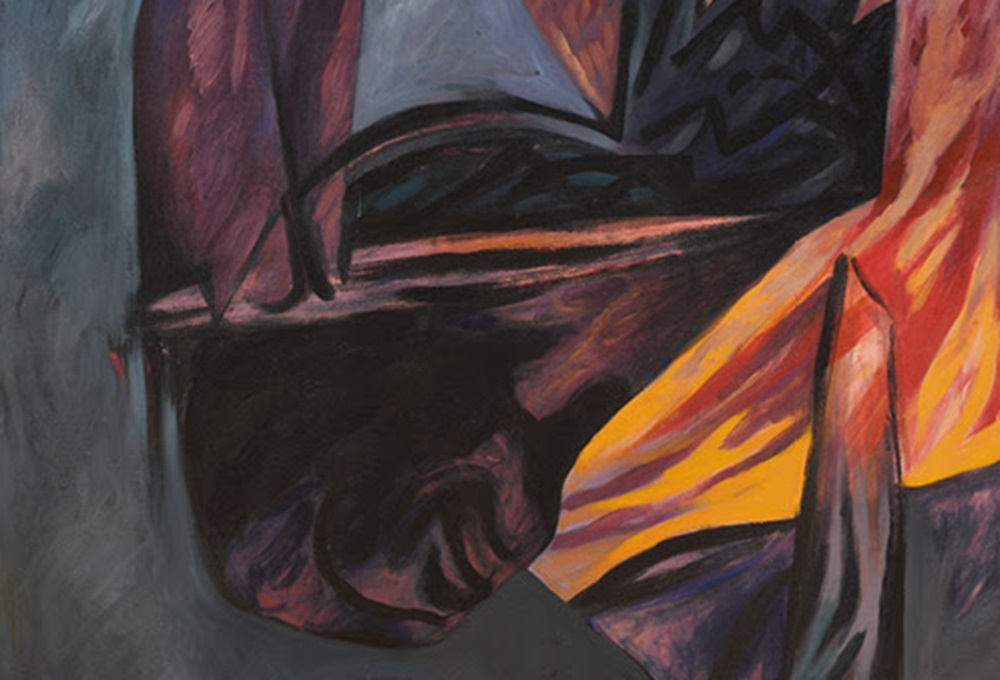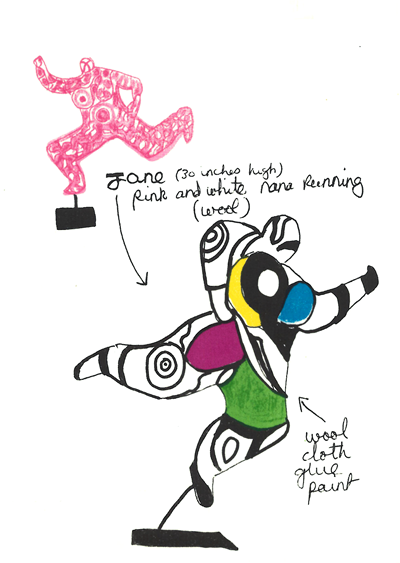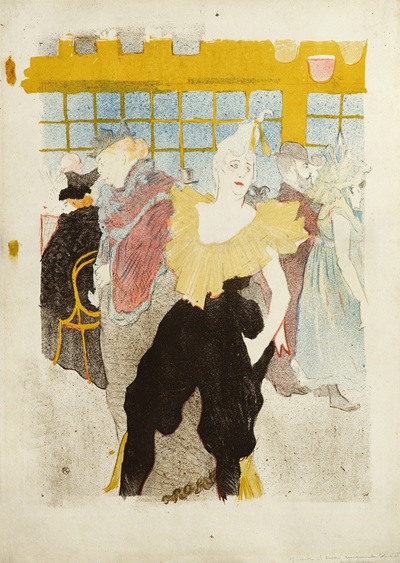
The President of the Electoral Council of the NLG Mr. Stavros Zoumboulakis noted during his opening speech that this is the first exhibition of a series of events with reference to the 50th anniversary of the fall of the junta.
The exhibition was curated by Mr. Spyros Moschonas in collaboration with the technical support department of NLG, while the catalogue of the exhibition was edited by Mr. Stavros Zoumboulakis.The catalogue is also signed by Mr. Yannis Bolis.
The first exhibition of Iro Kanakaki (1945-1997) was held in December 1972 in the exhibition space of Asadour Baharian’s Ora Gallery. Shortly afterwards, the first issue of the historical magazine “Anti” will be published with her work on the cover. The magazine would be forced to close and re-launched in September 1974.
Stavros Zoumboulakis refers to the difficult years of the dictatorship, the creative turmoil of the time, “the essential identification of political and intellectual value”. The spirit of “critical realism” in painting, aiming at “the greatest possible political harmony”, takes refuge in painting, using pictures of current events. Iro Kanakaki belongs to this aesthetic trend, as do other important artists such as Yannis Valavanidis, Cleopatra Diga, Kyriakos Katsourakis and Chronis Botsoglou.
Kanakaki was a member of the Lambrakis Democratic Youth and the Central Council of the National Student Union of Greece (EFEE).She was arrested in April 1967 and deported to Gyaros.
The artist’s artistic style and the most important stages of its development are referred to by Mr. Yannis Bolis, according to whom “Expressionist roughness distinguishes the engravings of her student years at the Athens School of Fine Arts, where she studied next to the engraver Kostas Grammatopoulos, one of the most important engravers of his generation with important works, including in series of Greek philatelism”. Mr. Yannis Bolis also introduces us to the term “socialized art”, a result of the social reality during the difficult years of the dictatorship and the urgent need for the artist to communicate with society through militant works of art, articulating a speech about the values that are being violated and the hypocrisy of the political leadership. Kanakaki’s gaze focuses on the oppression and deterioration of an unrelenting everyday life and the unbearable psychological conditions in the workplace. She also paints industrial landscapes with harsh realism.
In 1974 at Ora Gallery, she will take part in a joint exhibition with Kyriakos Katzourakis and Chrysa Voudouroglou, having returned from England and finishing her postgraduate studies in the printmaking programme at Croydon College of Art.
Her focus will be on the events of the Athens Polytechnic Uprising and Cyprus, among others. It is also the time when, according to Y.Bolis, there will be a shift in her work towards a new “more experiential perception of things…with the subjective element prevailing and the cycle of critical realism being completed and closed”.
Works from this new period 1974-1979 will be exhibited again at the Ora Gallery in 1979, followed by a new solo exhibition at the same Gallery in 1985 with works of a ”refined psyche”. ”The compositions with fabrics and flowers, monumental and frozen in a perpetual stasis of time, emerge in an eerie silence ,in the liminal space between dream , reality and fantasy ,between the familiar ,the paradoxical and the unknown ,between vision and poetry”, writes Y.Bolis.
According to him, in Kanakaki’s work in the 80s realism recedes and expressionism prevails. “Female, male and childlike figures, the element of monumentality, the freedom of gesture, heavy contours, the feeling of direct carnal experience and contact … feelings, manifestations and expressions of love, maternal love, tenderness and sensitivity”, will be the main theme of the exhibition that will be presented in 1990 at 30 Stournari Street in Exarchia.
The artist’s personal quest during the last period of her life through the visual expression of emblematic myths such as “The Murder of Kassandra” will be exhibited in the chambers of the Old Barracks of Argos in 1995.According to Mr. Spyros Moschonas, this was the period when Kanakaki spoke about the “ego” and the “super ego”.
But Mr. Moschonas does not stay there. He develops a comprehensive periodization of her artistic work through exhibitions and publications in the press, while introducing us to important new emerging art movements of the time in Europe and America, their leaders, and their late influences on Greek artists.
Every form of power throughout the history of humanity has had a distinctive outer shell with a distinctive vocabulary. The fabrics and flowers, the rigid machinery of landscape reconfiguration guarantee dystopias, a political conformism of a new style ,perhaps more threatening than in the youthful era ,where the enemy was obvious and clearly politicized.
“Reality is made of the same material as art” says Walter Puchner *edition “Sparkwritings”-The small genre, OTAN publications
Great deadlocks bring great works. Let us reflect on the times of the “difficult birth”, when our physical existence was threatened and a powerful value structure and an unprecedented aesthetic language were being created.
“…the consequence of a deep desire to find a meaning for the fragments to overcome the inhuman…” as Iro Kanakaki herself says to her friend Eleni Vatopoulou (from the exhibition catalogue).







Leave A Comment